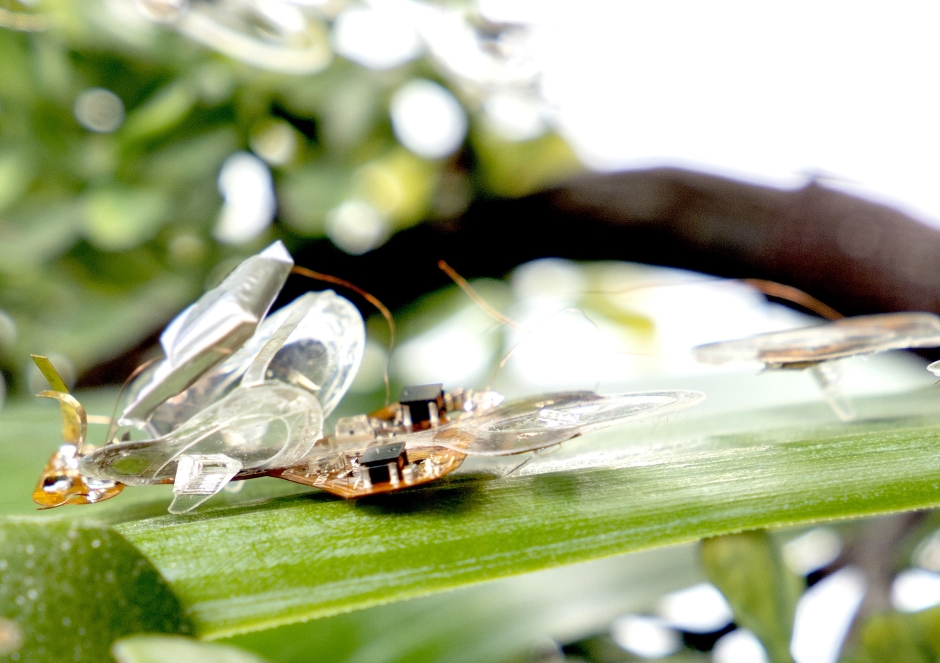The team from at EPFL's School of Engineering have developed two versions of this soft robot, which they’ve dubbed DEAnsect. The first, tethered with ultra-thin wires, is said to be very robust. It can be folded, hit with a fly swatter or trodden on without impacting its ability to move.
The second is untethered, wireless and autonomous. This model weighs under 1g and carries its battery and electronic components on its back. The machine is equipped with a microcontroller and photodiodes that allow it to recognise black and white patterns and follow any line drawn on the ground.
Optical lace gives light touch to soft robots
Motion of untethered soft robot hinges on external stimuli
DEAnsect was developed by a team at EPFL's Soft Transducers Laboratory (LMTS), working with the Integrated Actuators Laboratory (LAI) and colleagues from the University of Cergy-Pontoise, France. The research was published in Science Robotics.
DEAnsect is equipped with dielectric elastomer actuators (DEAs), a type of hair-thin artificial muscle that propels it forward through vibrations. These DEAs also enable it to move over different types of terrain, including undulating surfaces.
According to EPFL, the artificial muscles consist of an elastomer membrane sandwiched between two soft electrodes. The electrodes are attracted to one another when a voltage is applied, compressing the membrane, which returns to its initial shape when the voltage is turned off. The insect has such muscles fitted to each of its three legs. Movement is generated by switching the voltage on and off over 400 times per second.
The team used nanofabrication techniques to enable the artificial muscles to work at relatively low voltages, by reducing the thickness of the elastomer membrane and by developing soft, highly conductive electrodes only a few molecules thick. This design allowed the researchers to reduce the size of the power source.

In a statement, LMTS director Herbert Shea said: "DEAs generally operate at several kilovolts, which required a large power supply unit. Our design enabled the robot, which itself weighs just 0.2g, to carry everything it needs on its back.
"This technique opens up new possibilities for the broad use of DEAs in robotics, for swarms of intelligent robotic insects, for inspection or remote repairs, or even for gaining a deeper understanding of insect colonies by sending a robot to live amongst them.
"We're currently working on an untethered and entirely soft version with Stanford University. In the longer term, we plan to fit new sensors and emitters to the insects so they can communicate directly with one another."










Microplastics evading capture in wastewater treatment
Can anyone provide a link to a credible peer-reviewed study demonstrating toxicity from microplastics? This report uses words like ´potential´ and...